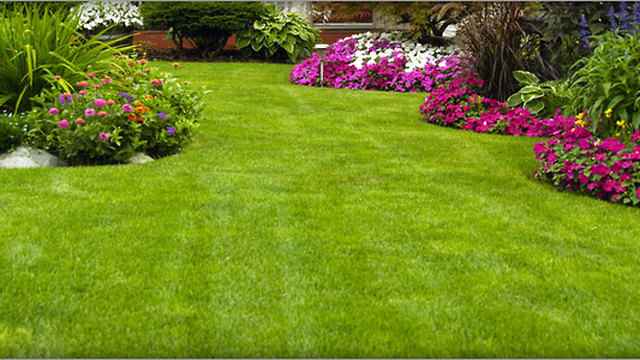10 Simple Steps to Maintain a Perfect Lush Lawn

Everyone wants to experience and boast about perfect green lush lawns. Effort and time for a good lawn upkeep routine can help make it possible. A lush, verdant grass requires more than just mowing and watering. It entails a combination of appropriate care measures matched to your grass type and local climate.
Steps to Maintain a Perfect Green Lush Lawn
Lawn maintenance requires a blend of basic regular and once-a-week chores. For perfect lawns, you can also hire a Fort Collins Plant Care consultation that provides you with extra care and knowledge about keeping your lawn lush. Below are some clues that can help you keep up your game!
1) Mow Grass Once a Week
The first and most important tip to get a perfect beautiful lawn is to mow the grass every week. A bare lawn maintenance routine requires trimming once a week during the summer and spring seasons. Accordingly, you can adjust the frequency of your mowing sessions depending on weather conditions and the climate of your city.
Mowing timings are also important. Experts recommend early evenings to mow lawns for better results to keep the grass locked in moisture. In addition to this, ensure that grass height gets cut one-third while trimming.
2) Include Sprinklers for Early Morning Routines
Healthy lawns require adequate water. Water is a crucial ingredient in keeping your grounds green. However, it is not essential to water lawns regularly unless there are new seeds of grass growing. Ideally, you should water lawns at least twice or thrice a week. To make full use of the watering schedule, you can utilize a sprinkler. Sprinklers mainly cover the overall area, which helps water your entire lawn. The best time to water your greens is in the morning, between 7 to 10.
3) Opt for Customized Grass
It is best to customize the grass for new homes or properties, or lawns that need complete remodeling to get the best results. There are plenty of grass types available and famous for being used for yards. Some grass types like Kentucky bluegrass and bermudagrass do not require much maintenance.
Rainfall also affects the performance of certain grass varieties. Further, grass types also function distinctively according to your region’s climate. When choosing the right kind of grass, always consider the environment of your area. Contact Artificial Grass Pros of Broward for the best lawn maintenance advice! You can consult lawn professionals for personalized recommendations.
4) Fertilizers For your Lawn
You can add fertilizers to your lawn to make it look greener and perfect while you show off its lushness. Adding fertilizers to your routine is an easy and DIY task for homeowners. All you need is a good quality fertilizer and a suitable lawn spreader; you must ensure that it meets the needs of your customized grass.
There are two varieties of lawn spreaders available. These include broadcast spreaders and drop spreaders. You can opt for drop spreaders for small lawns, while broadcast spreaders work great with large areas.
You can make your space the desire of your neighborhood. You can get a lush green lawn to flaunt and love with a few simple lawn chores. Look for the perfect professional team to experience lush green lawns. A green and well-maintained property can please your guests. You can flaunt it in front of your colleagues and friends to fetch compliments.
5) Weed Control Methods
Weeds can quickly invade and compete with your grass for resources. Implement an integrated weed management approach, combining cultural practices, mechanical removal, and selective herbicides as needed. Regularly inspect your lawn for weeds and address them promptly to prevent their spread.
6) Soil Aeration
Soil compaction can hinder root growth and water infiltration, leading to thin, weak grass. Periodically aerate your lawn to alleviate compaction and promote better air and water movement in the soil. Core aeration is an effective method that removes small plugs of soil, allowing roots to penetrate deeper and access nutrients more easily.
7) Pest and Disease Management
Keep a close eye on your lawn for signs of pest infestations or diseases, such as brown patches, yellowing grass, or unusual spots. Identify the specific pest or disease affecting your lawn and choose appropriate control measures, such as insecticidal treatments or fungicides. Maintain proper lawn hygiene and cultural practices to minimize the risk of future outbreaks.
8) Routine Maintenance Tasks
In addition to the above steps, regular maintenance tasks play a vital role in keeping your lawn healthy and attractive. Edge the borders of your lawn to define its shape and prevent grass from encroaching onto walkways or flower beds. Remove debris, such as leaves and branches, to prevent suffocation of the grass and allow for proper air circulation.
9) Proper Irrigation System
Consider installing an efficient irrigation system, such as a sprinkler system or drip irrigation, to ensure consistent and uniform water distribution across your lawn. Adjust the watering schedule according to seasonal changes and weather conditions, avoiding overwatering or underwatering, which can stress the grass and promote weed growth.
10) Regular Monitoring and Adjustment
Finally, regularly monitor the condition of your lawn and adjust your maintenance practices as needed. Keep records of your watering, fertilization, and pest control activities to track their effectiveness and make informed decisions for future care. By staying proactive and attentive to your lawn’s needs, you can maintain a perfect lush lawn that enhances the beauty of your outdoor space for years to come.
Also Read: Everything You Need to Know about Input Credit Taxation

